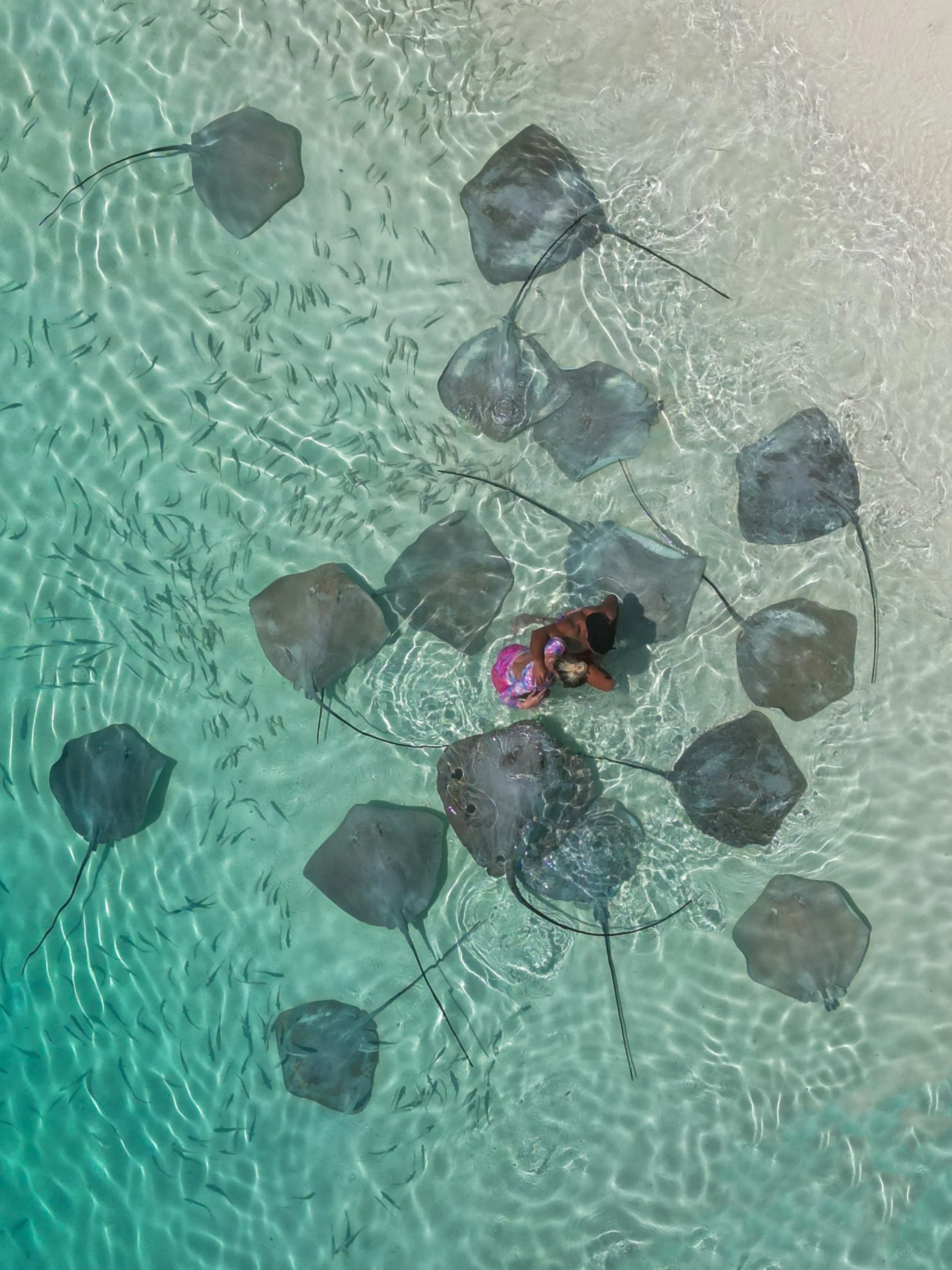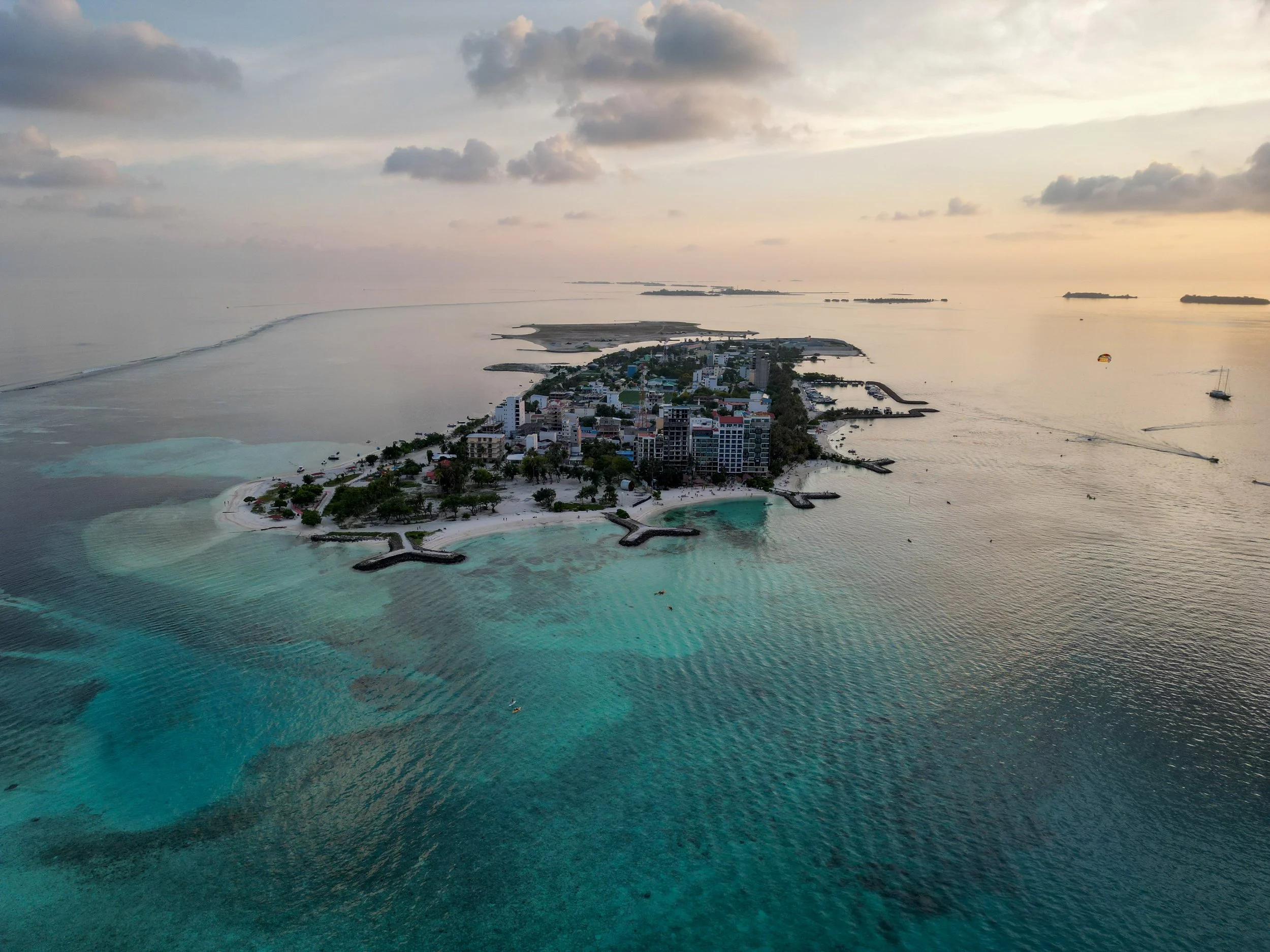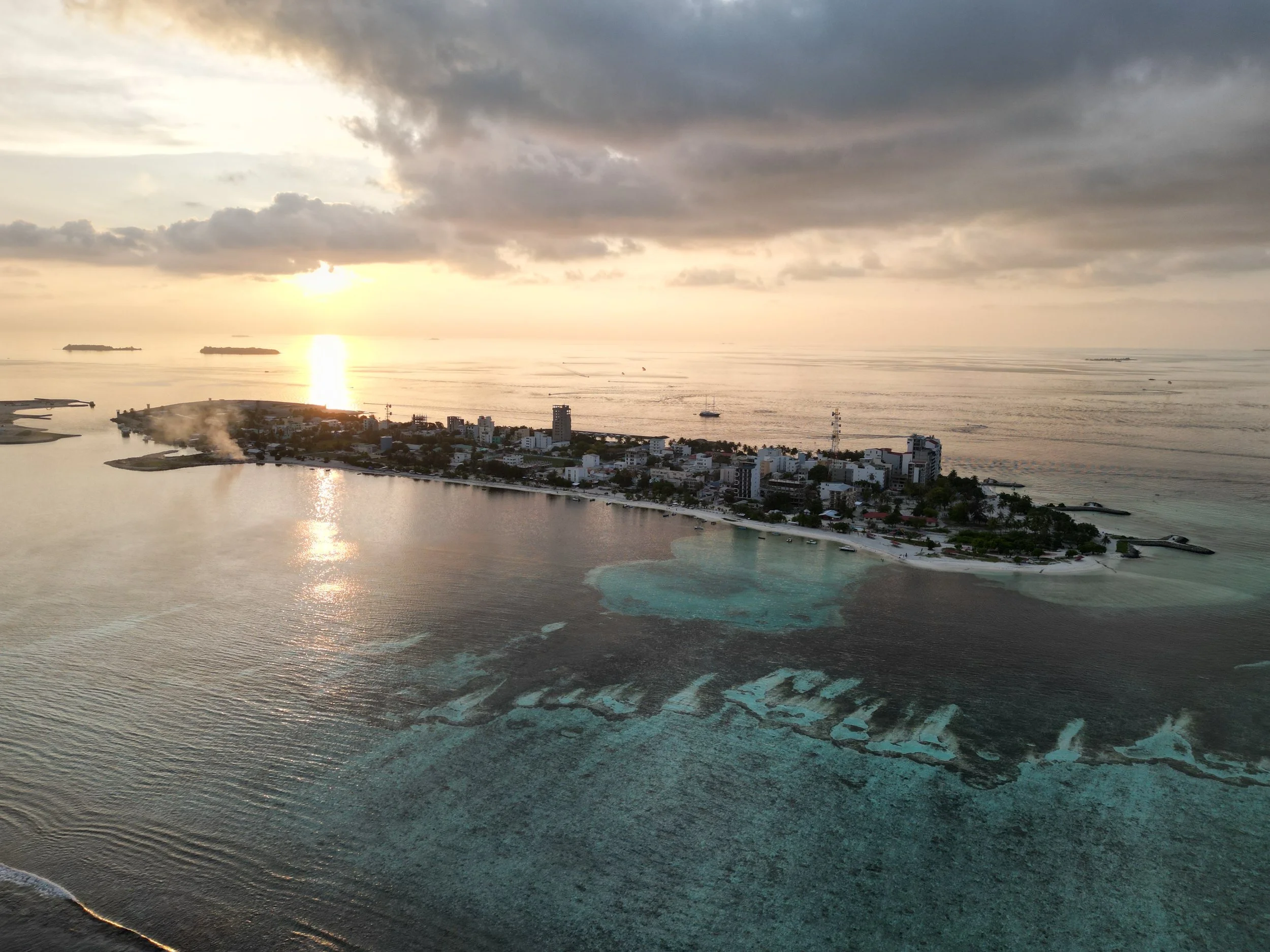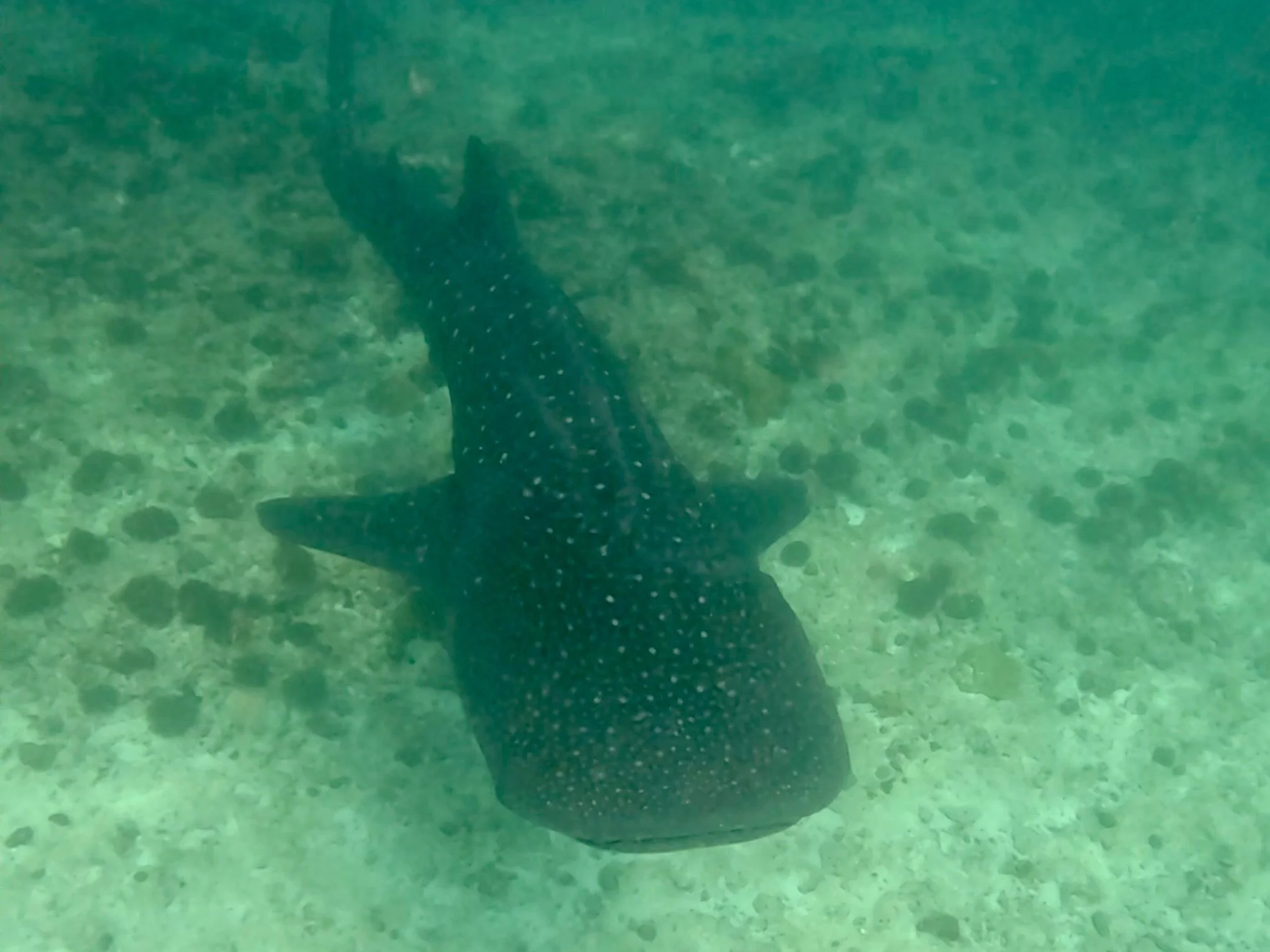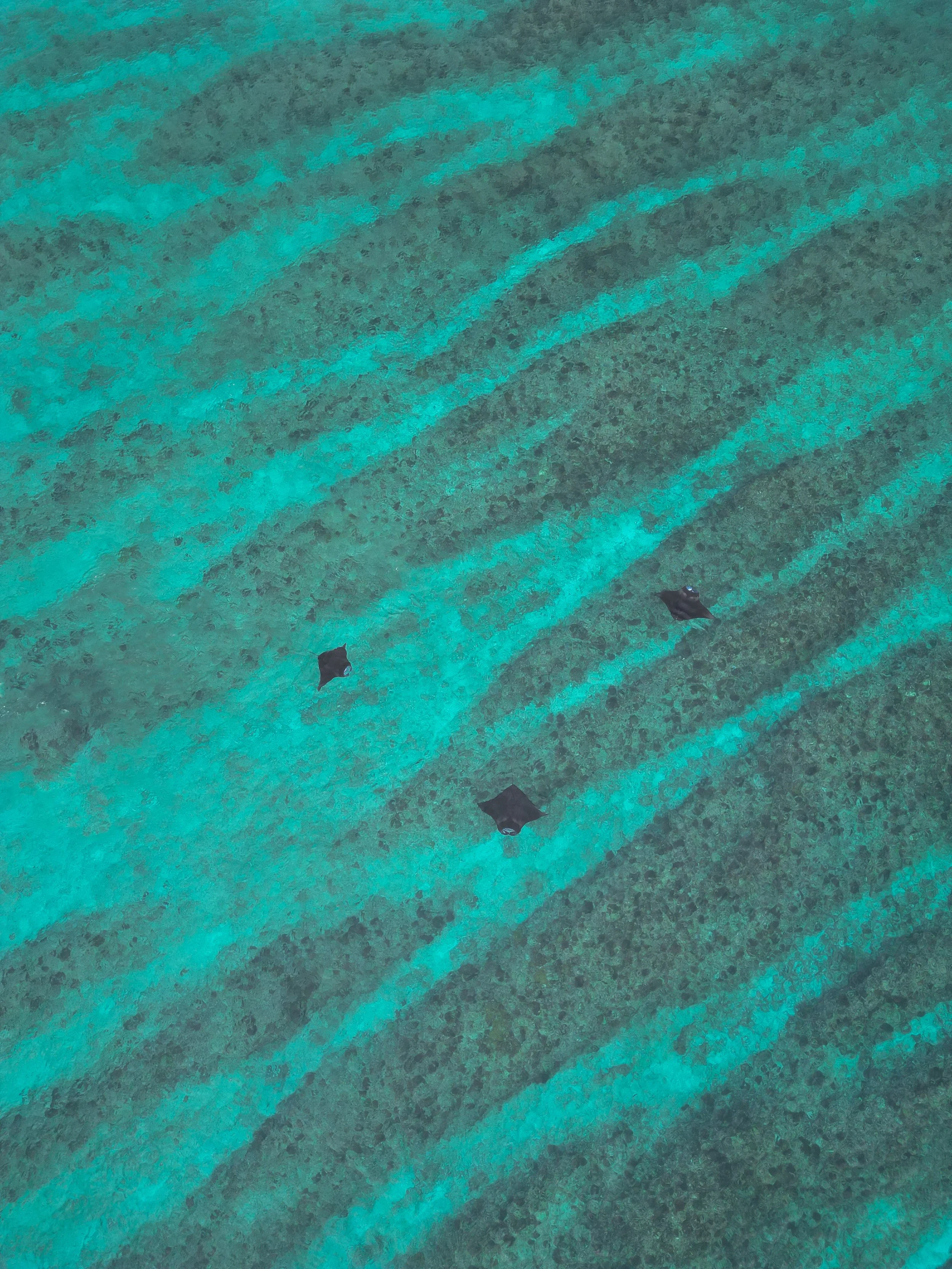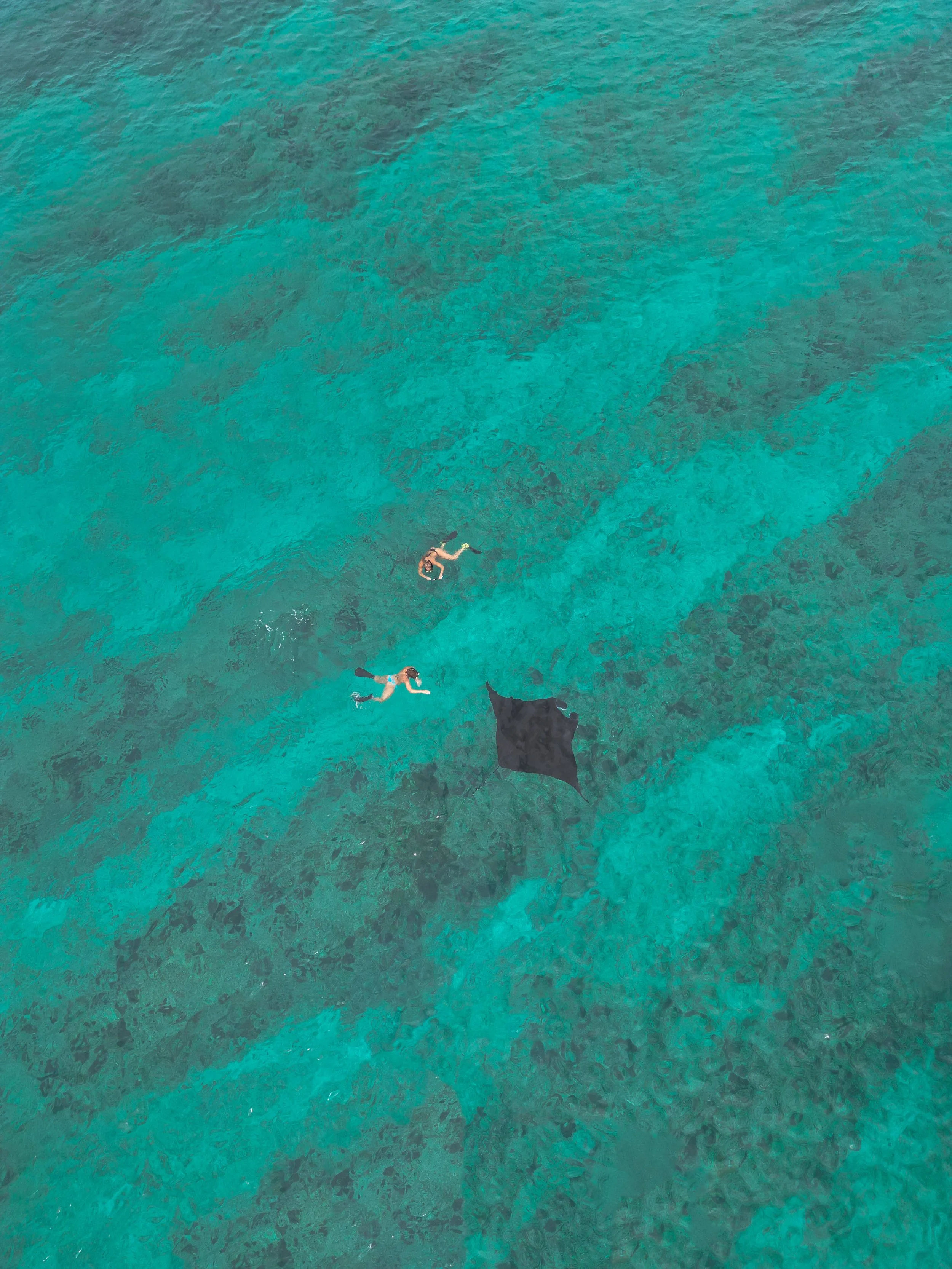Exploring Vaavu Atoll
29 November
I had heard lots of good things about a local island 45 minutes south of Male called Maafushi. This island was the first island in the country to establish guest houses. This is a way for people who do not want to spend the crazy amount of money needed when visiting a resort here in the Maldives. Trust me, I know. I work for the Ritz Carlton. The island also offers lots of excursions.
I got a couple of days off and headed to the island. At the Ritz, we have staff boats that go from the resort to Male three times a day. I hopped on the evening boat at 19:00 resort time (an hour ahead of Male time) and got to Male an hour later. I waited at my favorite coffee shop for the 22:00 boat to Maafushi. The boat ride only took about 35 minutes, and I met up with Maalu, who runs the beautiful Merijaan guest house. I chose a standard tour the next day and went to bed.
30 November
I woke up an hour before meeting at the shop and got a good breakfast from the guest house (that was included), then headed to Shadowpalm Tours’ main office to get to the boats. I chose to do the main tour that day, which included nurse sharks, dolphins, sandbank, and manta visits. Eight other people were on the boat, and we headed south to Vaavu Atoll. I had heard Vaavu has some of the best marine life in the Maldives. I'm also keen as a couple of the tours have seen whales in the area.
On the trip down south, the water was so flat that it mirrored the sky. It took about 30 minutes for us to reach the infamous nurse shark spot. They congregate here due to people feeding them, which has negative effects, but compared to everything else in the world in terms of pollution, the sharks eating native fish scraps is not the worst. We parked the boat, and I got on the roof and launched my drone. Drones are such amazing tools because I have perceived wildlife through my eyes or a camera throughout my whole life. This is a whole new experience and a way for me to see the world differently.
After getting some wonderful shots, I landed the drone on the boat’s top and headed down to swim with the sharks in the water. Nurse sharks are still sharks and have a mouth, so one must be careful not to get your fingers or hands in a place where they could think it’s food. I dove down, focusing on another shark, while another came from my right and smacked me in the face! After we got on the boat, a pod of dolphins showed up, so we got ready to jump in with them. The boat went ahead of the pod, I jumped into the water, and they were moving at a decent pace. I got a great shot of some swimming past, but when I turned around and was swimming back, I saw another pod! A dolphin came very close to me, turned toward me as seven male dolphins came in, and I witnessed a dolphin orgy in front of my face. I was too stunned to even turn my Gopro on!
On the boat, as I was getting dry, Mohammed, one of the guides, got a call saying there was a whale sighting inside the atoll. Whales are very rare in this country. Two months before, there were humpbacks, and five days before, there were sperm whales, so everyone on the boat was super excited.
We took off at full speed to the area where the whale was sighted. I was sitting on the bow of the boat, scanning the water ahead. About 30 minutes later, sure enough, we see the spout on the horizon. We got close to the area and waited a bit. Mohammed and I got our drones ready. We see the spout and the back of the whale and launch the drones. I expected it to be a humpback, but as our drones approached the whale, the size and color were off. Then it hit us that we were looking at the largest animal on the planet. This is a blue whale!
They are insanely rare in the Maldives, and the guides said this was the first time they have ever seen one around this area. The closest spot known for blue whales is near the southern coast of Sri Lanka. We were all excited and shouting as this was my first time seeing one. Blue whales have always been at the top of my list of animals to see in the wild, and this sighting has earned its place in my top 5 wildlife spots of all time.
The guides on the boat wanted to swim with it, but blue whales are notoriously shy, and it kept coming up and disappearing. I suggested we just wait and use the drones to observe it. That turned out much better. The whale would surface and take 5-7 breaths before submerging again. It was so cool getting a shot of the whale breathing and seeing the rainbow shimmer from its spout. After a magical hour of hanging out in the presence of this stunning creature, we moved on to the local island of Felihdhoo, which has a famous stingray area.
We docked the boat, and everyone got out to take photos with the rays. I launched my drone, got some photos of people in the water with the rays, and took photos of the island.
After getting our photos, we headed to a manta spot to check if they were at the cleaning station, but unluckily for us, they were away. So, we anchored the boat on one of the longest sand banks in the Maldives and had a delicious local lunch on the sand. I launched my drone to get some photos of the sandbank and around 14:00, it was time to head back to Maafushi.
After a nice shower and some rest, I went out at sunset to get some photos of the surrounding area.
Our group from that trip made plans to meet up later and head to a restaurant after getting the photos from the tour. I hit the hay around 11 that night. The next day, I would join the whale shark trip to South Ari Atoll.
1 December
I woke up early, ready for another trip. Today we headed to the south area, the most famous spot for seeing whale sharks. It was raining at first, so we waited a bit but eventually started our 90-minute boat ride to south Ari atoll. Once we got near the Atoll, we got a much-needed restroom stop in the ocean, then headed to the whale shark spot.
I've heard horror stories about this excursion because of how unregulated it is so I had to see for myself. The stories don't even do it justice. About 15 minutes into searching, we get word of a shark and head there, along with 30 other boats. I briefly jump in the water and see the shark, but it goes deep. It was wild to watch all the boats and tourists. There were around 50 people in the water at once, many of them could not swim and were just confused. It is ridiculous how many people I have encountered visiting here in the Maldives who ask if they need to know how to swim to go on excursions that involve swimming. We get back onto the boat and then make our way over to another shark. This one stays a little longer, and I did some nice free dives to see it. I was able to dive down, photograph, pop back up, swim past the crowds, and see the shark again with very few people around. Whale sharks constantly move at a decent speed, just out of an average swimming pace.
The whale sharks come to this atoll to thermoregulate as the waters circulating here are nice and warm for them. Whale sharks can feed at depths of 1800 meters (6,000ft). Since they are cold-blooded creatures, they must return to the surface to warm themselves up before diving back into the frigid abyss.
We swam with three other whale sharks like this and then moved on to the manta spot. In about four to six meters of water, mantas were feeding. I launched my drone from the boat to get a new view of these incredible animals. The species around here are the reef mantas which can have wingspans up to 4 meters wide. Mantas are amazing because they have the largest brain-to-body ratio of any fish. When you are in the water, you can sense their intelligence when in their presence. Flying my drone, I found nine mantas and the drone even caught me in one photo with all the boat operators and the stunning reef rocks that looked like an underwater waterfall.
I searched for whale sharks with the drone, but couldn’t find any, so I returned to get more shots of the mantas with some new friends I met on the boat. My battery was getting to 40%, and I like to bring my drone back when it hits that percentage especially when I’m over the water. I was in the boat’s bow and had my drone coming down to hand-catch it. Well, the drone saw my hand and freaked out. It went up, the boat moved with the waves, and the drone, already in landing sequence, went down, hit the side of the boat, and went into the water. My heart literally sank at that moment. I handed the controller to the guide and then jumped in after it. Saltwater is the enemy of all things, and this little drone wasn’t made to be that water-resistant, so it was toast. But I did save the sd card and retrieved the wonderful photos from the day.
After that, we headed to a local island by the name of Dhigurah, which is where I had wanted to fly the drone since it’s such a pretty island. I made the best of the time by hanging out with the groovy people on the trip and enjoying good local food for lunch. It was a long hour and a half back to Maafushi, looking at my dead drone. Everyone asks if you have crashed a drone, and the answer is either yes or not yet.
I met up with a friend for dinner and took the evening boat back to Male. Then I caught the night boat back to the Fari islands, where I work and live. I may have lost a drone, but I had the experience of a lifetime and was able to photograph the largest mammal on the planet in an area it usually isn’t found. That experience made up for me losing the drone!
Thank you for reading this blog. Stay Wild!








